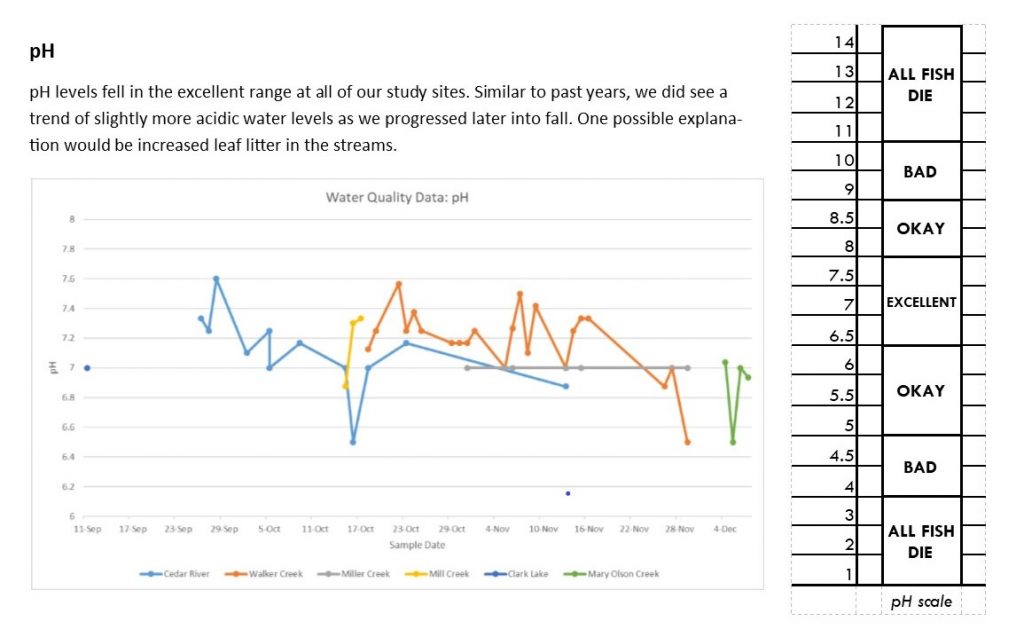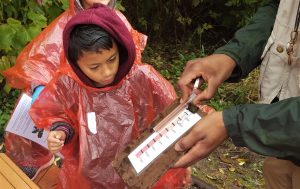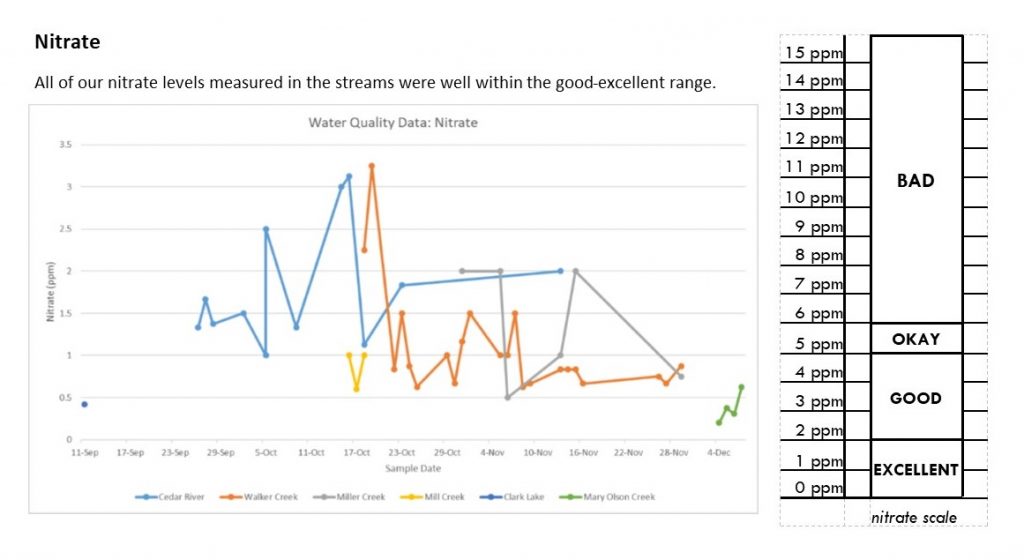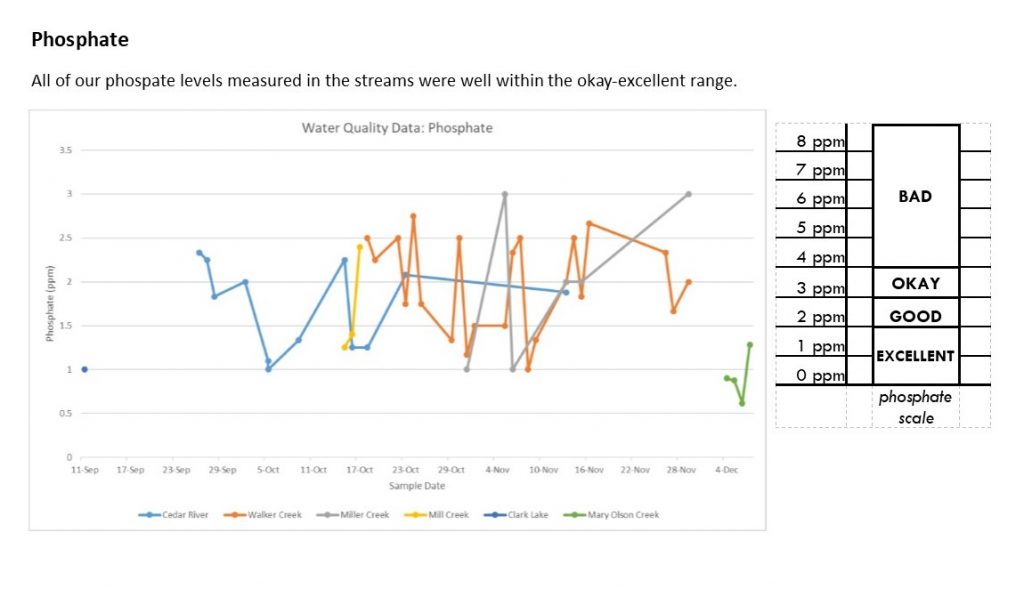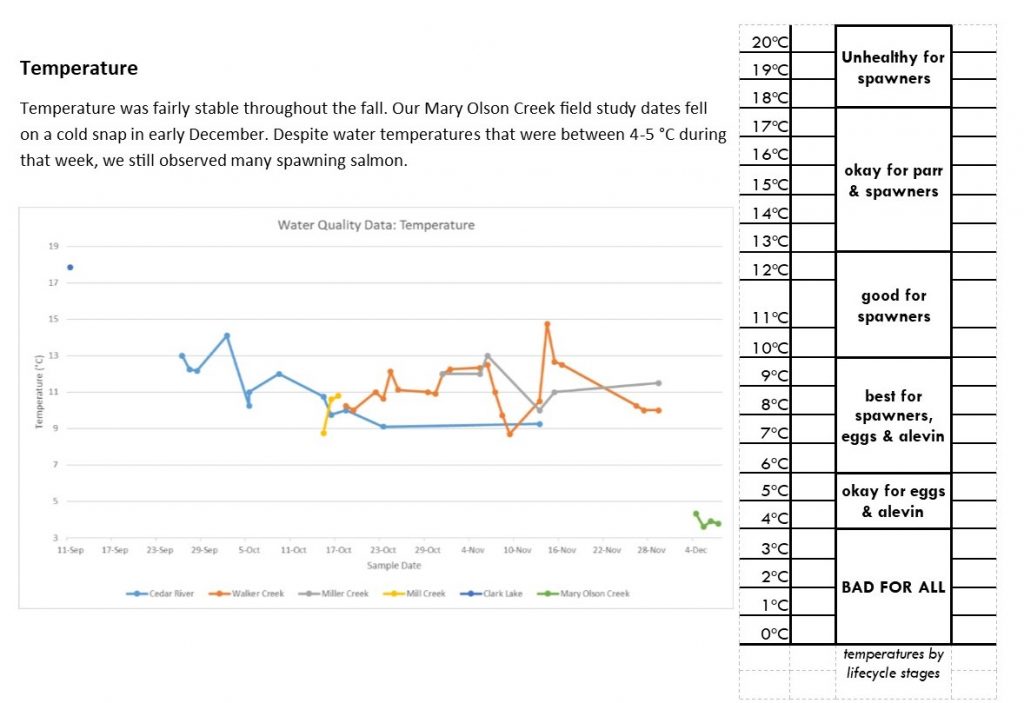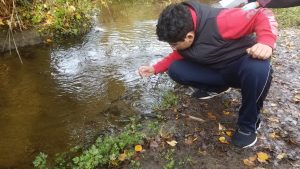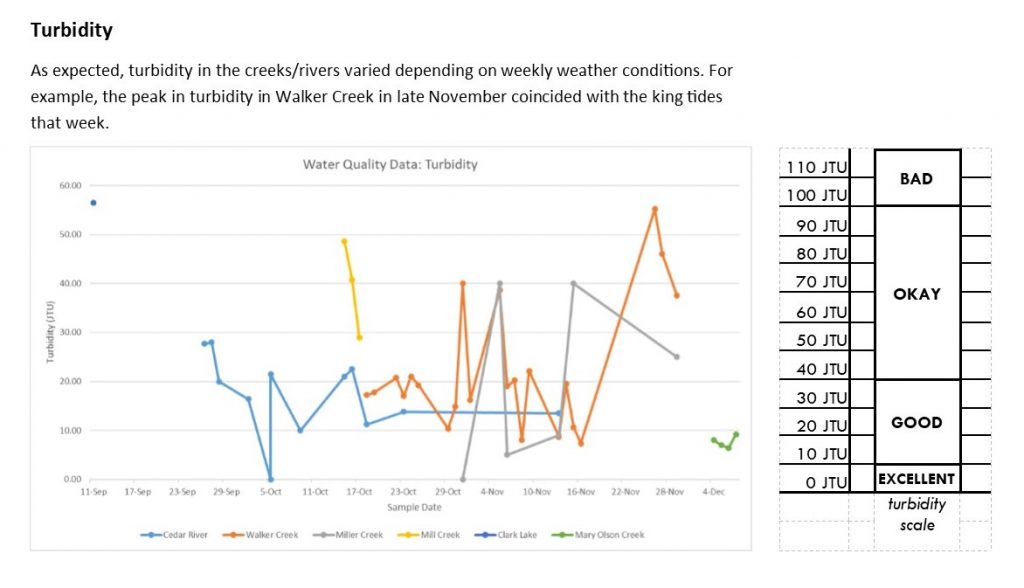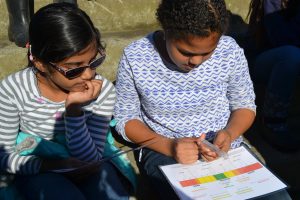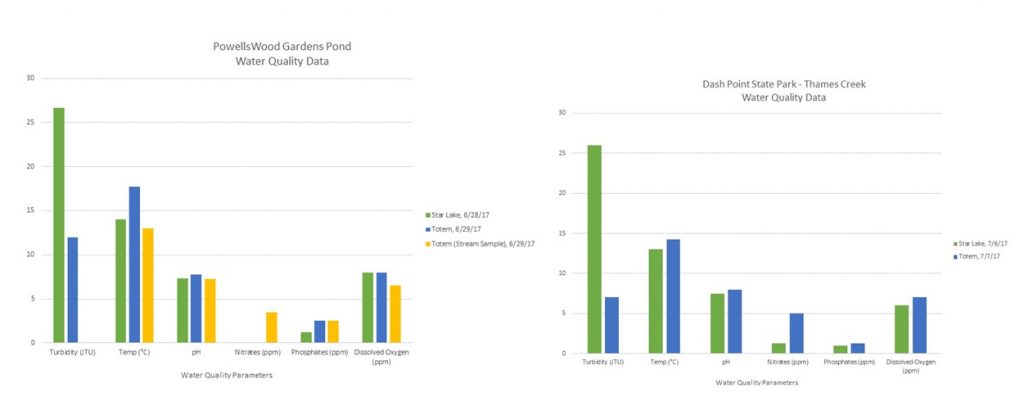Checking on the health of our watersheds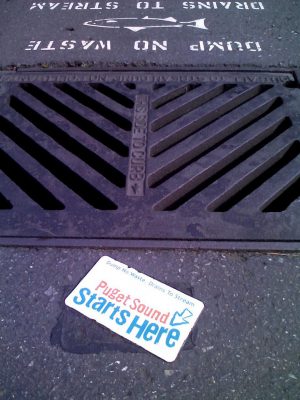
The Puget Sound watershed was originally covered in forests and wetlands that would naturally filter and direct the flow of water. As the population in the area increased, construction and man-made barriers have changed the flow of this rainwater. Now the rainwater is instead diverted to storm drains.
Stormwater runoff, excess water flowing during storm events, is a major concern for Puget Sound. As the rain falls and water flows through our communities, various toxins can be picked up along the way. These pollutants end up flowing directly into Puget Sound without any treatment. If water quality is poor in our watersheds, aquatic life and surrounding ecosystems feel the effects.
A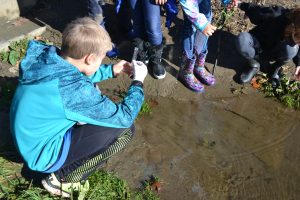 s part of our Salmon Heroes and other programs, ESC has partnered with local schools to test our local waters. Our program has expanded throughout the years, allowing us to reach more students and in turn, more sample locations. Our main test locations included Miller and Walker Creeks in Normandy Park, the Cedar River in Renton, and Olson Creek (off the Green River) at Mary Olson Farm in Auburn. All four of these are salmon-bearing streams. At every site, students measured a number of factors to help determine if the water is healthy for the salmon. This leads to a discussion on how to prevent and decrease the pollutants from entering Puget Sound.
s part of our Salmon Heroes and other programs, ESC has partnered with local schools to test our local waters. Our program has expanded throughout the years, allowing us to reach more students and in turn, more sample locations. Our main test locations included Miller and Walker Creeks in Normandy Park, the Cedar River in Renton, and Olson Creek (off the Green River) at Mary Olson Farm in Auburn. All four of these are salmon-bearing streams. At every site, students measured a number of factors to help determine if the water is healthy for the salmon. This leads to a discussion on how to prevent and decrease the pollutants from entering Puget Sound.
How do the students measure water quality? They test for six test factors using LaMotte low cost water monitoring test kits.
pH is a measurement of the acidic or basic quality of water.
Nitrate is a chemical nutrient needed for plant growth.
Phosphate is a chemical nutrient needed for plant growth.
Dissolved oxygen is the oxygen that is present and dissolved in water.
Temperature of the water can vary based on the weather but is also influenced by trees near the stream and stormwater runoff.
Turbidity is the measurement of the clarity of water.
Throughout our 2018 Salmon Heroes fall field season, we measured these factors at our four major field sites. We also tested water at two other locations with certain classes, Clark Lake and Mill Creek, both located in Kent, WA. Neither Clark Lake or Mill Creek are current salmon bearing streams.
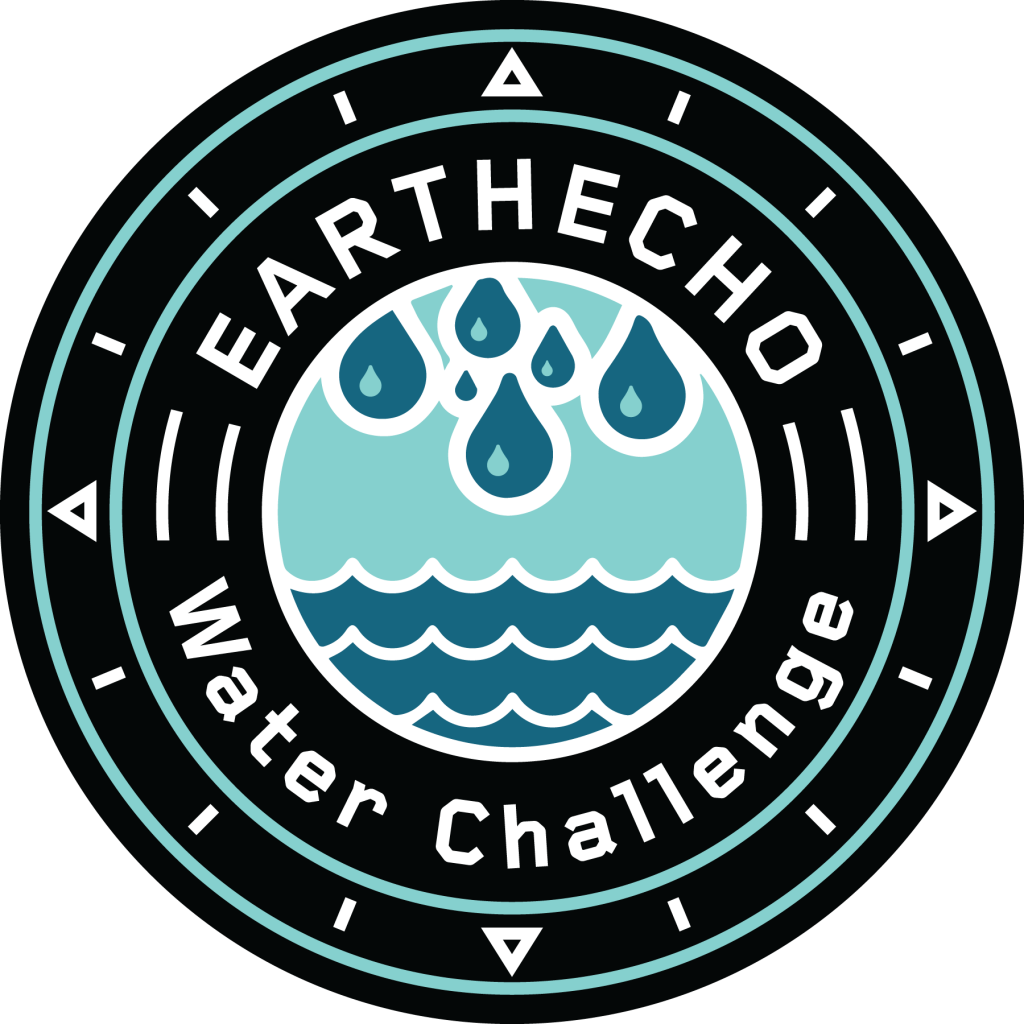
All of our water quality data is also uploaded and viewable as part of the Earth Echo Water Challenge. As an Earth Echo Water Challenge Partner, Environmental Science Center is committed to sharing the water quality data our students collect and also to help build public awareness and involvement in protecting water resources around the world.
Interested in water quality data from past field seasons? Click here for water quality data from previous years.
Summer Salmon Heroes
Thanks to a generous grant from National Marine Sanctuary Foundation (NMSF), we were able to work with Federal Way students and collect water quality data at two new sites in the summer of 2017 – PowellsWood Gardens and Dash Point State Park. The results from those tests are found in the charts below.
Overall, the water quality was good at the two sites based on the tests. The Dash Point State Park site had no macroinvertebrates, which was an indication of pollution that was not covered by the tests. Students concluded that the water is poor water quality for salmon at the Dash Point State Park site due to the lack of macroinvertebrates.
Big Picture Service Learning
Big Picture Middle School Students conducted monthly restoration at Seahurst Park removing the highly invasive English ivy and planting native
 plants. These plants filter polluted stormwater and create more wildlife habitat in the park. Students also created interpretive signs and placed them along the trail so the public could learn a bit more about this project.
plants. These plants filter polluted stormwater and create more wildlife habitat in the park. Students also created interpretive signs and placed them along the trail so the public could learn a bit more about this project.
The 7th and 8th graders monitored water quality in the park by collecting aquatic macroinvertebrate samples and quantifying pollution tolerance index. Students found an average Pollution Tolerance Index of 19 indicating Potentially good water quality
The most prominent macroinvertebrates found while sampling:
Species Intolerant to pollution: golden stoneflies, little brown stoneflies
Species Moderately Tolerant to Pollution: free living caddisflies,
Species Tolerant to Pollution: Amphipoda, midges, black fly larvae, and aquatic earth worms.

